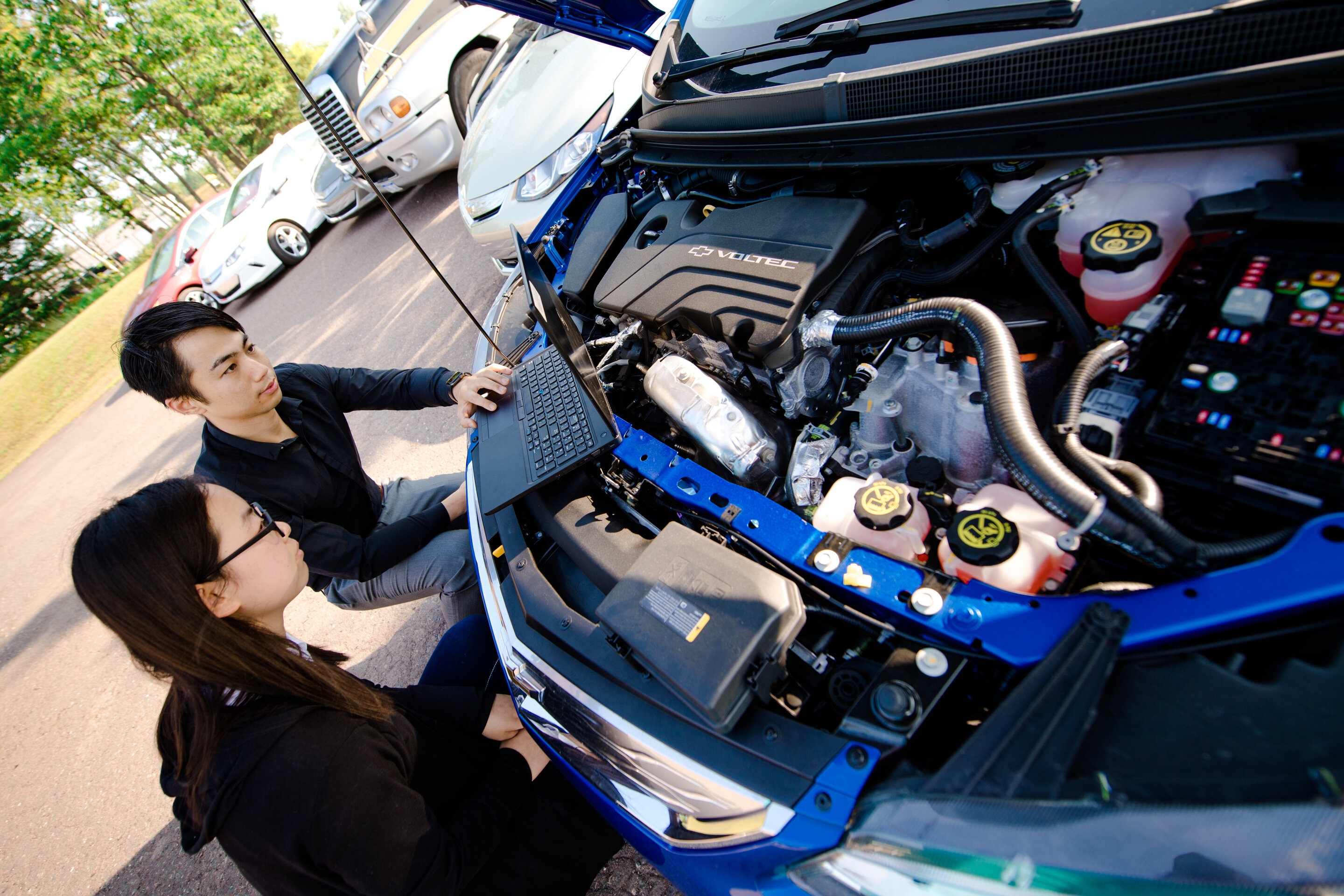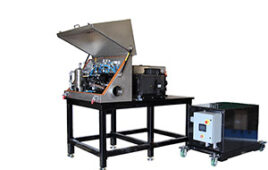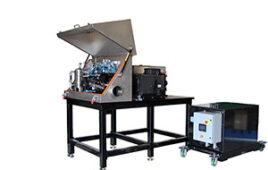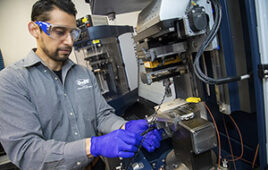
Graduate students Qinjie Lyu and Shuaidong Zhao work with Kuilin Zhang on connected vehicle technology. Connected vehicle data is full of holes; models developed by Michigan Tech engineers help fill in the missing information. Credit: Sarah Bird/Michigan Tech
If you have a new or late model car, most likely it’s connected: GPS navigation, that infotainment panel, the wireless network your car creates—they’re all ways for your car to provide information, whether it’s to give you directions, ping other vehicles, or to check in with infrastructure like traffic signals, signs or bridges.
All of this data creates the potential for connected cars to help transportation planners get an accurate picture of how their roads are being used. Right now, though, this kind of data is generally uncontrolled, inaccurate and unreliable, with missing locations and paths.
Kuilin Zhang, assistant professor of civil and environmental engineering and affiliated assistant professor of computer science at Michigan Technological University, has developed a way to fill in the gaps, as presented in a recent study published in Transportation Research Part C: Emerging Technologies. In the future, Zhang believes this will be a cost-effective way to allow transportation planners to do everything from make more effective traffic congestion mitigation strategies to know where to build wider or new roads.
“In the future, we’re going to have more connected vehicles,” he said. “If we fill in the missing parts of the data they’re providing, we can get complete activity and travel for individual drivers, and then this data can be used to know demand.”
Filling in the Gaps in Connected Cars
Cars don’t need to be autonomous to be connected: any vehicle with wireless access, such as cellular or Dedicated Short-Range Communication (DSRC) technologies, is considered connected. IHS Automotive expects that 152 million actively connected cars will be on roads around the world by 2025 and that the average car will produce up to 30 terabytes of data every day.
Connected vehicle trajectory data could be used to make travel predictions, but Zhang has found that there are enough gaps in the data that they can’t be used to make reliable predictions.
In this study, researchers used two-months of connected vehicle data from 2,800 cars, provided by the Safety Pilot Model Deployment Program in Ann Arbor, Michigan. From it, they created a data-driven optimization approach to reconstructing the missing location-duration-path choices those cars make. The reconstructed choices can be used to improve the validation and calibration of the models. The activity-based models of travel demand dynamics give more details to transportation planning organizations. Better estimation of travel demand, Zhang said, will also help reduce congestion, decrease emissions and save energy.
Models Predict Vehicle Data
Zhang believes that the value of this activity-based model goes beyond just accuracy. It will save money. Local governments, who often buy information drawn from GPS on commercial vehicles from private companies, or rely on the National Household Travel Survey, which is expensive to conduct, and only presents information about a sliver of drivers instead of the whole , can use the models to know more and pay less to observe their municipality’s driving habits.
He also said that this kind of modeling will be especially important if more cities follow New York City’s lead and start implementing congestion pricing, which will use license plate readers to charge tolls to drivers during peak traffic times.
The next step in this research is for the model to be applied to existing connected vehicle testbeds in Florida, New York and Wyoming, and provide insights there on how to use connected vehicle data.
“This is a big data era,” said Zhang. “In addition to the safety benefit of connected vehicle technology, high-frequency data generated from connected vehicles offer big data set for new mobility solutions.”




